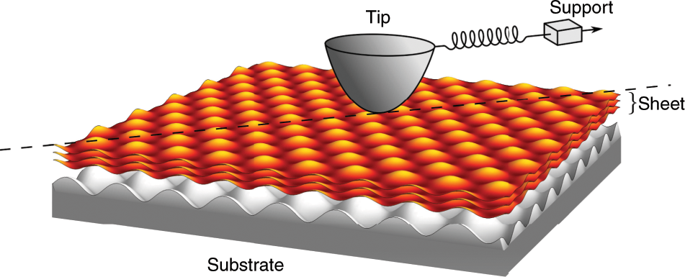当前位置:
X-MOL 学术
›
Nat. Commun.
›
论文详情
Our official English website, www.x-mol.net, welcomes your
feedback! (Note: you will need to create a separate account there.)
Understanding the friction of atomically thin layered materials.
Nature Communications ( IF 14.7 ) Pub Date : 2020-01-21 , DOI: 10.1038/s41467-019-14239-2 David Andersson 1, 2 , Astrid S de Wijn 1, 2
Nature Communications ( IF 14.7 ) Pub Date : 2020-01-21 , DOI: 10.1038/s41467-019-14239-2 David Andersson 1, 2 , Astrid S de Wijn 1, 2
Affiliation

|
Friction is a ubiquitous phenomenon that greatly affects our everyday lives and is responsible for large amounts of energy loss in industrialised societies. Layered materials such as graphene have interesting frictional properties and are often used as (additives to) lubricants to reduce friction and protect against wear. Experimental Atomic Force Microscopy studies and detailed simulations have shown a number of intriguing effects such as frictional strengthening and dependence of friction on the number of layers covering a surface. Here, we propose a simple, fundamental, model for friction on thin sheets. We use our model to explain a variety of seemingly contradictory experimental as well as numerical results. This model can serve as a basis for understanding friction on thin sheets, and opens up new possibilities for ultimately controlling their friction and wear protection.
中文翻译:

了解原子薄层材料的摩擦。
摩擦是一种普遍存在的现象,它极大地影响着我们的日常生活,并且在工业化社会中造成了大量的能量损失。层状材料(例如石墨烯)具有令人感兴趣的摩擦特性,通常用作润滑剂(添加剂)以减少摩擦并防止磨损。实验性原子力显微镜研究和详细的模拟显示了许多有趣的效果,例如摩擦强化和摩擦对覆盖表面的层数的依赖性。在这里,我们提出了一个简单的,基本的薄板摩擦模型。我们使用我们的模型来解释各种看似矛盾的实验以及数值结果。该模型可作为了解薄板摩擦的基础,
更新日期:2020-01-22
中文翻译:

了解原子薄层材料的摩擦。
摩擦是一种普遍存在的现象,它极大地影响着我们的日常生活,并且在工业化社会中造成了大量的能量损失。层状材料(例如石墨烯)具有令人感兴趣的摩擦特性,通常用作润滑剂(添加剂)以减少摩擦并防止磨损。实验性原子力显微镜研究和详细的模拟显示了许多有趣的效果,例如摩擦强化和摩擦对覆盖表面的层数的依赖性。在这里,我们提出了一个简单的,基本的薄板摩擦模型。我们使用我们的模型来解释各种看似矛盾的实验以及数值结果。该模型可作为了解薄板摩擦的基础,











































 京公网安备 11010802027423号
京公网安备 11010802027423号